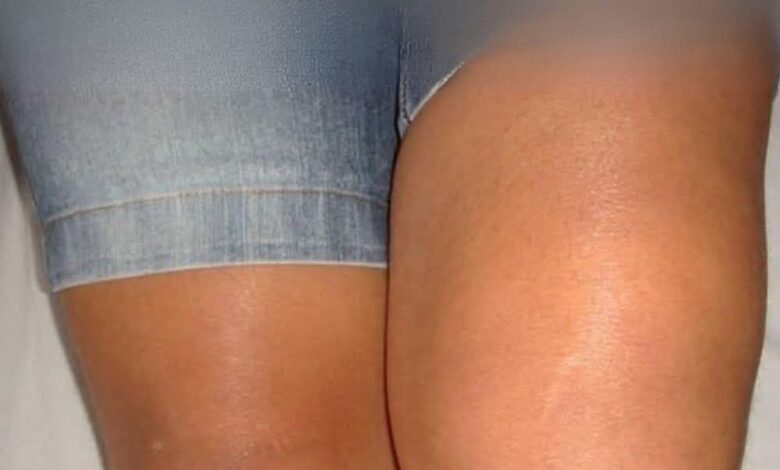Understanding Unilateral Knee Swelling: What Causes One Knee to Swell While the Other Remains Normal?

Discovering that only one of your knees has become swollen can be concerning, particularly when the other knee feels completely normal. Unlike bilateral knee swelling that typically suggests systemic conditions such as rheumatoid arthritis, single knee swelling generally indicates a localized issue affecting that specific joint. Recognizing the various causes of one-sided knee swelling can help you determine whether this is a minor concern or something requiring immediate medical evaluation.
Common Causes of Single Knee Swelling
1. Acute Injury and Trauma-Related Swelling
The leading cause of isolated knee swelling is direct trauma or repetitive stress injuries. You might not recall the exact moment of injury, particularly if it resulted from gradual overuse. Common trauma-related causes include:
Ligament Injuries:
- Anterior cruciate ligament (ACL) tears
- Medial collateral ligament (MCL) sprains
- Posterior cruciate ligament (PCL) damage
Structural Damage:
- Torn meniscus (cartilage damage)
- Kneecap dislocation
- Bone fractures or contusions
These injury-related causes typically produce swelling within several hours of the incident and may include accompanying symptoms like joint pain, stiffness, or knee instability.
2. Prepatellar Bursitis (Housemaid’s Knee)
The knee contains several small, fluid-filled cushions called bursae that reduce friction between moving parts. When the bursa in front of the kneecap becomes inflamed due to prolonged pressure, direct trauma, or extended kneeling, it results in prepatellar bursitis. This condition, historically called “housemaid’s knee,” typically affects only one knee and causes noticeable swelling at the front of the joint.
3. Joint Infections and Septic Arthritis
Bacterial joint infections represent a serious medical condition that can cause rapid-onset swelling, redness, warmth, and intense pain in a single knee. This condition often presents with systemic symptoms like fever or chills and requires emergency medical intervention. Healthcare providers may need to perform joint aspiration to remove infected fluid and prevent permanent joint damage.
4. Crystal Arthropathy: Gout and Pseudogout
Sudden, extremely painful knee swelling may indicate crystal arthropathy. Gout occurs when uric acid crystals accumulate in the joint, while pseudogout involves calcium pyrophosphate crystals. These conditions frequently affect individual joints and may cause recurring episodes of severe pain and swelling.
5. Degenerative Joint Disease (Osteoarthritis)
While osteoarthritis eventually affects both knees in most patients, it often begins in one knee, particularly if that joint has a history of injury or bears disproportionate weight. The swelling associated with osteoarthritis tends to be mild to moderate and may worsen following physical activity.
6. Popliteal Cyst (Baker’s Cyst)
A Baker’s cyst is a fluid-filled swelling that forms behind the knee joint. This condition often develops secondary to other knee problems like arthritis or cartilage tears. Patients with Baker’s cysts may experience tightness or swelling sensation, particularly when bending or extending the affected leg.
7. Vascular Complications and Deep Vein Thrombosis
Although uncommon, vascular issues like deep vein thrombosis (DVT) can cause knee area swelling, especially when combined with calf swelling, warmth, or pain. This represents a medical emergency requiring immediate treatment to prevent potentially life-threatening complications.
Red Flag Symptoms Requiring Immediate Medical Attention
Seek urgent medical care if you experience:
- Sudden, severe swelling accompanied by fever or chills
- Hot, red, or extremely tender knee joint
- Complete inability to walk or bend the affected knee
- Swelling that persists for several days without improvement
- Signs of infection or systemic illness
Treatment Approaches for Single Knee Swelling
Conservative Management
- Rest and activity modification
- Ice application for acute swelling
- Compression bandaging
- Elevation of the affected leg
- Over-the-counter anti-inflammatory medications
Professional Medical Treatment
- Prescription medications
- Physical therapy programs
- Joint aspiration or injection procedures
- Surgical intervention for severe cases
Prevention Strategies
Injury Prevention:
- Proper warm-up before exercise
- Appropriate protective equipment during sports
- Gradual increase in activity levels
- Strength training for supporting muscles
Joint Health Maintenance:
- Maintaining healthy body weight
- Regular low-impact exercise
- Proper nutrition for joint health
- Avoiding prolonged kneeling or repetitive stress
When to Consult Healthcare Professionals
Consider scheduling a medical evaluation if:
- Swelling persists beyond 48-72 hours
- Pain interferes with daily activities
- You experience recurring episodes
- Home treatment methods prove ineffective
- You have concerns about joint stability
Diagnostic Procedures Your Doctor May Recommend
Healthcare providers may utilize various diagnostic tools to determine the cause of your knee swelling:
- Physical examination and medical history
- X-rays to assess bone structure
- MRI scans for soft tissue evaluation
- Joint fluid analysis
- Blood tests for inflammatory markers
Long-term Outlook and Prognosis
Most cases of single knee swelling respond well to appropriate treatment when diagnosed early. The prognosis depends on the underlying cause, with traumatic injuries and infections requiring more aggressive intervention than degenerative conditions.
Key Takeaways
Single knee swelling should not be ignored, especially when accompanied by pain, redness, or functional limitations. While many causes are treatable with conservative measures, some conditions require prompt medical attention to prevent complications. Early diagnosis and appropriate treatment are essential for maintaining long-term knee health and preventing chronic problems.
Understanding the potential causes of unilateral knee swelling empowers you to make informed decisions about when to seek medical care and what treatment approaches might be most beneficial for your specific situation.